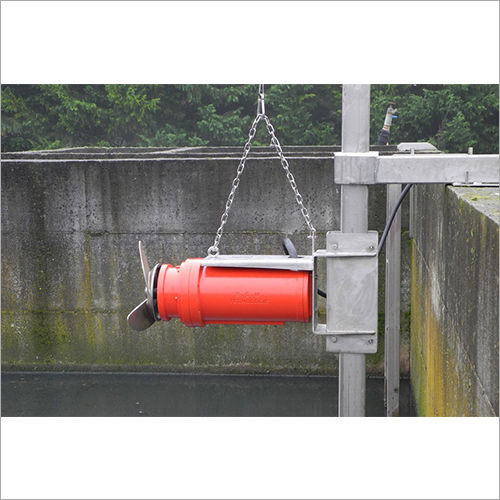Submersible Mixer
Product Details:
- Frequency 50 Hertz (HZ)
- Voltage 415 Volt (v)
- Click to View more
Submersible Mixer Price And Quantity
- 1 Piece
Submersible Mixer Product Specifications
- 50 Hertz (HZ)
- 415 Volt (v)
Submersible Mixer Trade Information
- Cash in Advance (CID)
- 1000 Piece Per Month
- 7 Days
- All India
Product Description
The motor propels the impeller to revolve quickly when the submersible mixer is turned on. Turbulent mixing and circulation occur as a result of the impeller's creation of a flow pattern in the surrounding liquid as it rotates. The impeller's high-velocity flow can be used to spread particulates, blend various liquid ingredients, or maintain consistent conditions inside a tank or basin.
Here are some essential characteristics and advantages of submersible mixers:
Effective Agitation and Mixing: Submersible mixers are made to produce high flow rates and turbulence, which effectively agitate and mix liquids or slurries. In a tank or basin, they can aid in homogenising the temperature, pH, dissolved oxygen, or chemical concentrations.
Operating Directly in the Liquid or Slurry: These mixers' submersible design enables them to work without the aid of external support structures. Because of this, they can be used in situations where the liquid level changes or in tanks with little headroom.
Flexibility: Submersible mixers are applicable to a wide range of conditions and applications, including wastewater treatment facilities, anaerobic digesters, equalisation tanks, biogas reactors, industrial mixing tanks, and agricultural manure pits. Both small-scale and large-scale systems can use them.
Energy Efficiency: Submersible mixers often include motor and impeller layouts that are optimised for energy efficiency. They can mix materials efficiently while consuming less power and spending less on running expenses.
Easy Maintenance: A lot of submersible mixers are made to be simple to operate and maintain. They might have detachable impellers or motor units that make it simple and quick to clean, check, or replace components.
When choosing a submersible mixer, it's crucial to take into account variables including the required flow rate, tank size, liquid viscosity, and special mixing goals. To guarantee best mixing performance, the mixer must be installed, positioned, and adjusted correctly.
Submersible mixers are generally trusted and adaptable mixing equipment utilised in a variety of fields and applications. They provide effective agitation and mixing while submerged, which enhances the overall efficiency of the process or operation.
FAQ
1. What is a submersible mixer, exactly?
Ans - An electric mixer that can be submerged in a liquid container and is used for mixing and blending is known as a submersible mixer. The mixer mixes the contents by spinning internal blades that generate a liquid vortex.
2. What advantages come with utilising a submersible mixer?
Ans - Submersible mixers are the best for quickly and cleanly combining huge amounts of liquid. They are also perfect for processes like making paints, creams, and other goods where a more thorough mixing is required.
3. What kinds of liquids are compatible with a submersible mixer?
Ans - Water, oil, and other non-corrosive liquids can all be mixed with success using submersible mixers.
4. What distinguishes a submersible mixer from a regular electric mixer?
Ans - Standard electric mixers are made to be used on a countertop or other flat surface, whereas submersible mixers are made to be submerged in liquid. Submersible mixers are better at fully blending huge amounts of liquid and are less likely to splatter.
5. A submersible mixer should be cleaned on a regular basis, right?
Ans - To keep a submersible mixer in good operating order, it is advised to clean it after every usage. You can accomplish this by draining the container and cleaning off any debris from the inside of the container as well as the blades.






